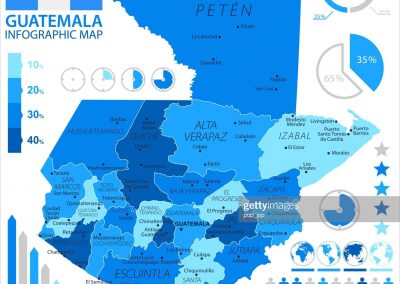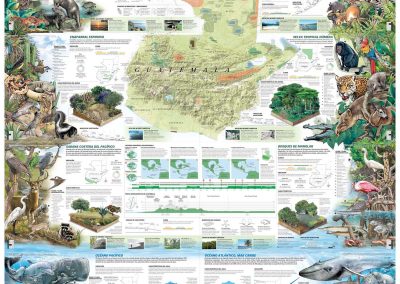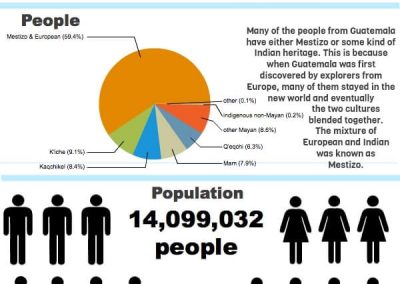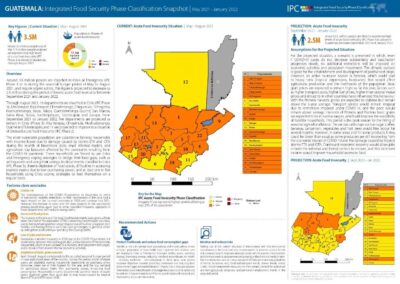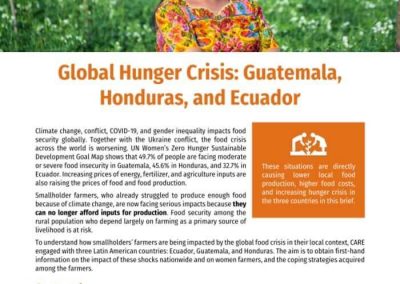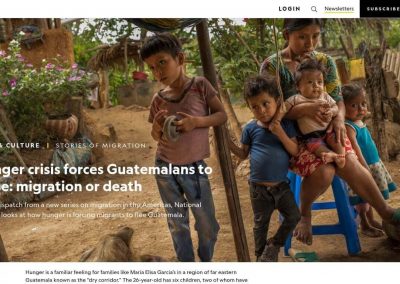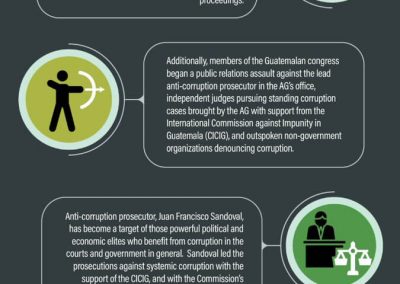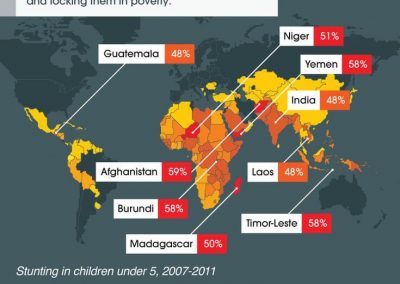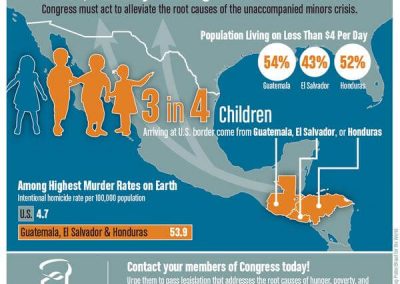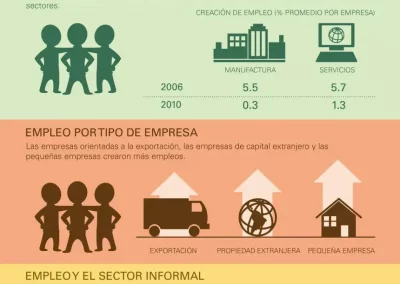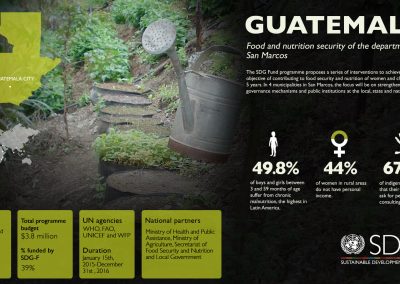1. Guatemala strategies
Guatemala is a country located in Central America, bordering Mexico (to its north).
It is a country blessed with incredible natural beauty, a rich history, and friendly people. Its stable currency and strong business sector make it an attractive destination for foreign investment.
However, Guatemala suffers from issues of child malnutrition. This is a complex problem that requires long-term, sustainable solutions. In solving country-wide problems, society frequently needs to make sacrifices and choose a wise path.
Education for all and transparent governance to reduce corruption are two essential tools to tackle these issues.
Please note that this strategies page currently focuses, not on the virtues, but only on specific issues that need correction, or improvement.
_____
References: Country cases where national plans were followed to achieve social transformation.
– South Korea is a presidential democracy that has achieved remarkable social and economic development through sustained national policies. After the Korean War, South Korea implemented policies that focused on modernizing its economy and improving education. These policies led to the creation of a highly skilled workforce, a world-class manufacturing sector, and a modern transportation system. South Korea experienced rapid economic growth between the 1960s and the 1980s.
– New Zealand is a parliamentary democracy that has achieved significant social and economic development through sustained national policies. One of its most notable achievements is its strong social welfare system, which provides universal healthcare, education, and social security. New Zealand has also made significant progress in reducing poverty and improving environmental sustainability. These policies were implemented mostly in the 1980s and 1990s.

[խ] Questions we can make about Guatemala, answered
General issues
Introduction: Guatemala is a country with little more than 100,000 square kilometers and, in 2022, sixteen million inhabitants. In the sixteenth century, “conquistadores” established a Spanish colony, controlling Guatemala’s indigen populations of Mayan origin. Mostly due to its rugged terrain, lack of roads and other means of communication, and its very rich and varied natural resources, fauna and vegetation, more than half of Guatemala’s population in 2022 is indigenous, and they keep a significant part of their traditional customs. Its mostly white, or mixed population mostly concentrates in Guatemala’s principal modern urban centers and agricultural and industry-productive lands, and has produced a vibrant developing economy, but a large part of its indigenous population still lives in poverty.
Give me selected general information about Guatemala
Explain to me how Guatemala has unique natural and historical riches and resources
Describe selected problems or issues Guatemala is facing
Show me some plans and solutions for Guatemala
Specific issues
Give me some information about violence in Guatemala
Explain to me how extreme poverty contributes to food insecurity in Guatemala
Describe to me selected Guatemala malnutrition statistics
Show me selected Poverty Reduction Initiatives in Guatemala
Selected Infographics
Click on any image to enlarge.
At the bottom of the description under each image, you may “click to source location”.
General Information
Guatemala: Infographic map
Illustration about Guatemala map with borders, cities, capital and administrative divisions. (Click to source location.) (presented by gettyimages)
Guatemala: Living Paradise (Spanish)
The category “endangered” applies to living beings that are subject to factors that endanger their survival on Earth. (Click to source location.) (by alfredovela)
Guatemala
It is located in Central America, and shares land borders with the countries of El Salvador, Mexico, Honduras, and Belize. The climate in Guatemala is very tropical because of the bodies of water surrounding it. (Click to source location.) (by Kameron Kehoe in Piktochart)
Guatemala Acute Food Insecurity
In the latest analysis, all 22 departments of Guatemala were included. Around April 2022, more than 3.5 million people were experiencing high levels of acute food insecurity. Source, IPC. For much more detailed information from the IPC Integrated Food Security Phase Classification, click here for Guatemala, or to type in any other search terms you may be interested in. (Click to source location.) (by IPC, License: CC BY-NC-SA 3.0 IGO, 10-10-2022 www.ipcinfo.org)
Problems
Global Hunger Crisis: Guatemala, Honduras, and Ecuador
The food crisis across the world is worsening, especially in Guatemala, Honduras, and Ecuador, according to the UN Women’s Hunger Sustainable Development Goal Map. (Click to source location.) (by CARE)
A hunger crisis forces Guatemalans to choose: migration or death
In the first dispatch from a new series in the Americans, National Geographic looks at how hunger is forcing migrants to flee Guatemala. (Click to source location.) (by Nina Strochlic and Daniele Volpe in National Geographic)
Guatemala faces significant challenges with the quality of its institutions
The index for municipal public services for 2013 shows the performance of 76 percent of municipalities (223 of 340) was either medium-low or low in terms of the provision of public services. (Click to source location.) (by World Bank Blogs: Marco Antonio Aguero, Christian Borja-Vega, Kinnon Scott, Ana Silvia Aguilera)
How corruption is dominating the appointment of magistrates to Guatemala’s Top Courts
In response to an appeal by the Human Rights Ombudsman, the CC granted provisional protection for the four CC magistrates and suspended the impeachment proceedings. (Click to source location.) (by RICIG)
Hunger
This colorful nation has the highest prevalence of chronic malnutrition in Latin America and the fourth highest in the world. (Click to source location.) (by DownToEarth)
Stable growth: Poverty persists (Spanish)
Guatemala’s economy has grown steadily, but slower than other countries. Despite economic growth, it is the only country in Latin America where the income of the poorest 40 percent decreased between 2003 and 2012. (Click to source location.) (by Banco Mundial)
Child malnutrition
Malnutrition
One in four children is stunted from malnutrition, limiting their physical and mental growth and locking them in poverty. (Click to source location.) (by UN)
Violence, Poverty, and Hunger Push Children North
3 in 4 children arriving at the U.S. border come from Guatemala, El Salvador, or Honduras. Congress must act to alleviate the root causes of the unaccompanied minor crisis. (Click to source location.) (by Bread for the World)
Guatemala Profile
This country has the highest percentage of chronically malnourished children in Latin America (the fourth highest in the world). In some areas, chronic malnutrition causes 90 percent of children to suffer, due to poverty, traditional culture, and lack of access to the right foods. (Click to source location.) (by World Vision, src: Food and Agriculture Organization)
Solutions
Why does education in Guatemala matter?
It takes 12 years of education for a Guatemalan to be able to support a two-person family above their poverty line. (Click to source location.) (by Cooperative for Education)
Employment in Guatemala and the informal sector (Spanish)
Guatemala created jobs in the last decade, but to a lesser extent when compared to Latin American economies and other similar economies. Employment trends since 2006 have been different between sectors. (Click to source location.) (by Banco Mundial)
Guatemala: Food and nutrition security of the department of San Marcos
The SDG Fund programme proposes a series of interventions to achieve the overall objective of contributing to food security and nutrition of women and children under 5 years. (Click to source location.) (by SDGF: Sustainable Development Goals Fund)
Reference
Information sources
|
The following services base their opinions in reliable information: [ Mundo.Spain(r) ] – traffic # 830 [ ABC.Spain(site) ] – traffic # 1220 [ GreatBritain(site) ] – traffic # 70 [ Canada(r) **] – traffic # 1,120 [ France(r) ] – traffic # 39,700 [ U.S.Consulates(r) ] – traffic # 2,700 [ New York Times (r) ] – traffic # 80 [ CNN(r) ] – traffic # 70 |
[ Fox(site) ] – traffic # 220 [ CDC.USA(r) ] – traffic # 300 [ World Economic Forum(r) ] – traffic # 3,400 [ Healthline(r) ] – traffic # 250 [ WebMD(r) ] – traffic # 530 [ Mayo Clinic(r) ] – traffic # 870 [ Science/Research(r) ] – traffic # 125 [ MedicalScience(r) ] – traffic # 630
|

